Why Huskies Are Not Suitable for Hot Climate Areas
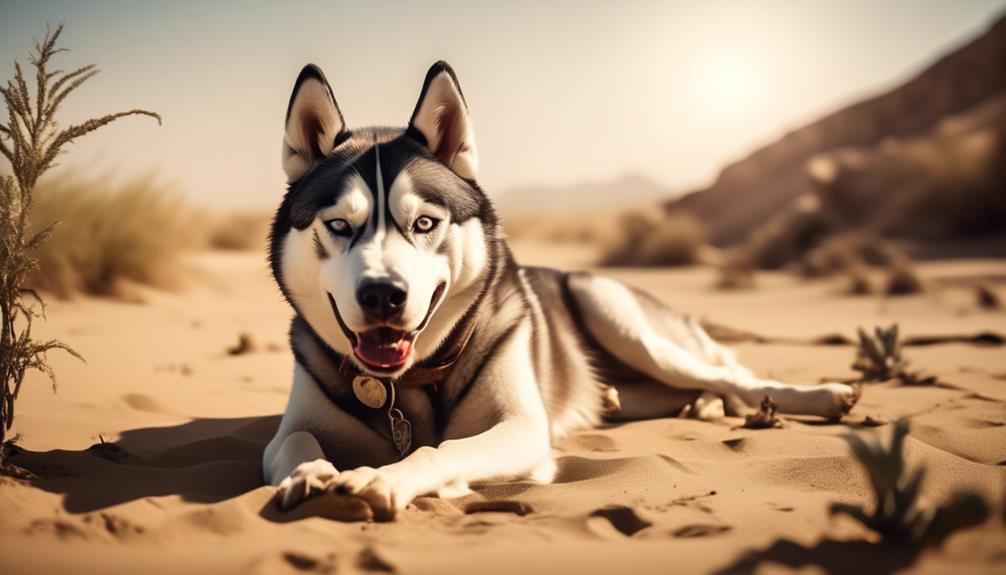
Huskies are known for their thick coats and genetic adaptations for cold weather. This makes them well-suited for cold climate areas. However, their thick coats can become a problem in hot climate areas. Huskies are not suitable for such regions because their coats can cause them to overheat and suffer from heatstroke.
Key Takeaways
- Huskies have a thick double coat that is designed for insulation in cold weather, but it traps heat in hot climates.
- Their limited ability to thermoregulate makes them more prone to overheating and heat-related illnesses.
- The mesocephalic skull structure of huskies aids in heat dissipation, but extended exposure to hot climates still poses health risks.
- Recognizing signs of overheating, providing shade, water, and adjusting exercise levels are important strategies to keep huskies safe in hot weather.
Huskies' Thick Double Coat
Huskies' thick double coat serves as a crucial adaptation for insulation and temperature regulation in hot climate areas. While they're known for thriving in colder environments, their coats also play a vital role in helping them cope with hot weather.
The double coat consists of an undercoat and a guard hair coat. The undercoat, which sheds in spring, acts as insulation during colder times, preventing heat loss from the body. The guard hair coat on top not only protects against snow and ice but also provides an extra layer of insulation.
In hot weather, huskies regulate their body temperature through their thick coats. The air trapped between the hairs acts as insulation, preventing excessive heat absorption. Additionally, huskies have the ability to pant and sweat through their paw pads, allowing for the evaporation of water from their nose, mouth, and lungs. This cooling mechanism helps to regulate their body temperature in hot climates.
However, it's important to note that huskies are still better suited for colder climates due to their thick coats. In hot weather, they may struggle to dissipate heat efficiently, and their thick coats can make them prone to overheating. It's crucial to provide them with plenty of shade and access to fresh water to help them cool down.
Limited Ability to Thermoregulate
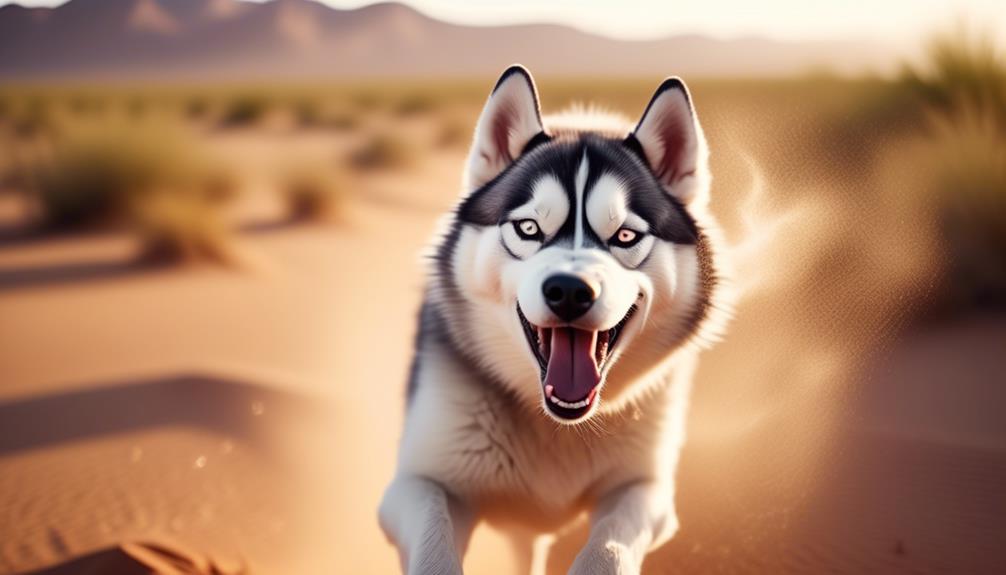
Do huskies possess the necessary thermoregulatory mechanisms to effectively cope with hot climates? Unfortunately, huskies have a limited ability to thermoregulate, making it challenging for them to dissipate heat in hot climates. Their thick double coat, which provides insulation to keep them warm in cold environments, becomes a hindrance in hot weather. The long fur traps heat close to their body, preventing efficient cooling. Unlike humans who sweat, huskies rely on panting to release heat, but this method is less efficient. As a result, they are more prone to overheating and heat-related illnesses. To keep your husky safe in hot weather, it is crucial to be aware of the common signs of overheating, such as heavy panting, rapid breathing, and weakness. If these signs are observed, immediate measures should be taken to cool them down, such as providing shade, cool water, and avoiding excessive exercise. It is recommended to keep your husky indoors during the hottest parts of the day and ensure they have access to plenty of water. For those who live in warmer climates, extra care and attention are necessary to prevent heat-related discomfort and illnesses in their huskies.
| Common Signs of Overheating | Measures to Cool Down |
|---|---|
| Heavy panting | Provide shade |
| Rapid breathing | Offer cool water |
| Weakness | Avoid excessive exercise |
Mesocephalic Skull Structure
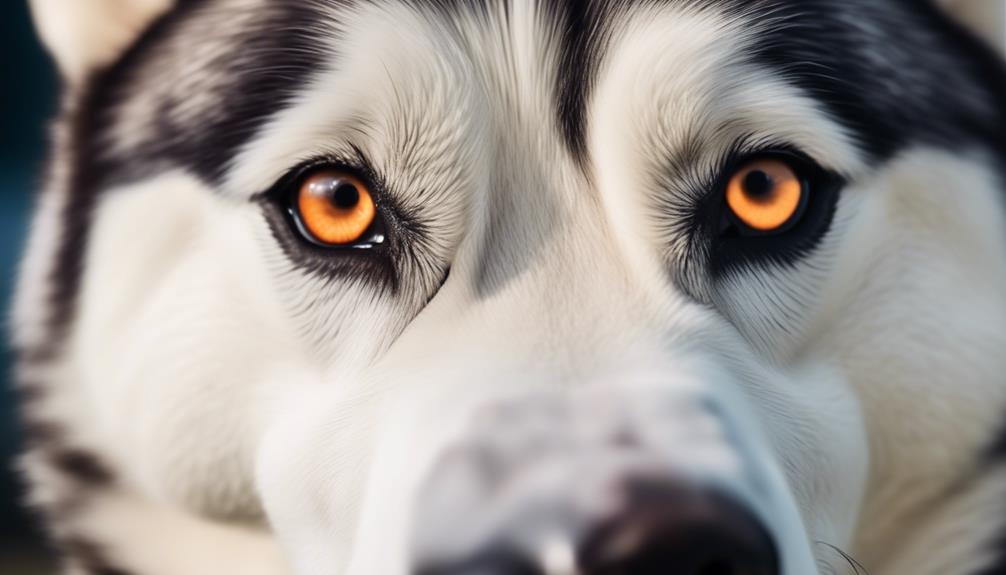
The mesocephalic skull structure of huskies contributes to their ability to effectively regulate body temperature in different climates. This unique skull structure plays a vital role in aiding huskies to adapt to hot weather conditions. Huskies, being a cold-weather dog breed, have evolved to live in regions with frigid temperatures. However, their mesocephalic skull structure allows them to withstand hotter climates as well.
The mesocephalic skull structure, characterized by a head width that's 50-60% of their head length, enables huskies to dissipate heat more effectively. This ventilation is crucial for their thermoregulation, as it helps to prevent overheating. When exposed to high temperatures, huskies pant to release excess heat. Their mesocephalic skull structure aids in the efficiency of this process, allowing them to cool down more efficiently.
In hot weather, huskies may also alter their behavior to seek shade and avoid direct sunlight. They instinctively find ways to regulate their body temperature, making them somewhat adaptable to different temperature ranges. However, it's important to note that extended exposure to hot climates can still pose health risks to these dogs. While huskies with their mesocephalic skull structure can tolerate higher temperatures compared to other cold-weather breeds, it's crucial to provide them with ample shade, water, and appropriate cooling measures to ensure their well-being.
Understanding the mesocephalic skull structure of huskies helps us appreciate their remarkable ability to adapt to various weather conditions, including hot climates. By providing them with the necessary support and care, we can help these dogs live comfortably in different environments while ensuring their optimal health and well-being.
Increased Risks of Heat-Related Illnesses
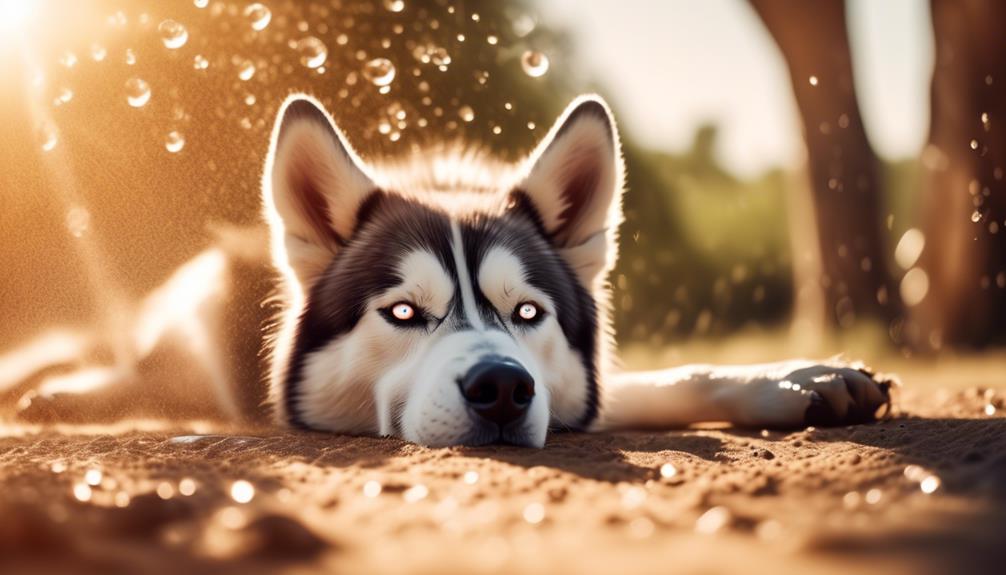
Heat-related illnesses pose significant risks to huskies in hot climates, requiring careful monitoring and appropriate measures to prevent overheating. Here are four important facts to consider:
- Signs of overheating: Huskies are built for colder climates and can struggle to tolerate high temperatures. Excessive panting, exhaustion, and discomfort are common signs of overheating in these dogs. It's crucial to recognize these signs early to prevent the progression to heat stroke.
- Providing shade and water: Keeping your husky safe in hot weather involves providing access to shade and fresh water. It's essential to ensure that your dog has a cool and shaded area to rest in. Additionally, always make sure they've access to cool water to stay hydrated.
- Sufficient exercise: Huskies need regular exercise to stay healthy, but it's important to adjust their activity levels in hot weather. Avoid exercising them during the hottest parts of the day and opt for early mornings or evenings when temperatures are cooler. Be mindful of their breathing and behavior during exercise to prevent overheating.
- Seeking veterinary assistance: If your husky is showing signs of overheating, such as bright red gums, excessive panting, or weakness, it's crucial to seek veterinary assistance immediately. Heat stress can quickly progress to heat stroke, which can be life-threatening if not promptly addressed.
Importance of Recognizing Signs of Overheating
Recognizing the signs of overheating in huskies is crucial to ensuring their well-being in hot climates. As responsible pet owners, it is important to understand and identify the symptoms of overheating in order to take immediate action and prevent any potential heat-related illnesses. The following table outlines some key signs to watch for:
| Signs of Overheating in Huskies |
|---|
| Heavy panting |
| Excessive drooling |
| Rapid heartbeat |
| Weakness or lethargy |
| Disorientation |
When a husky is overheating, their body temperature rises and they may exhibit these signs as a way to cool down. It is important to pay attention to their behavior, especially during outdoor activities or when they are exposed to high temperatures for long periods of time. Additionally, check their mouth and tongue for excessive redness or dryness, as this can also indicate overheating.
To cool down a husky, provide access to shade and ensure there is always a water dish available. Avoid walking on hot surfaces, as their paw pads are sensitive and can be easily burned. If you suspect your husky is overheating, take immediate action by moving them to a cooler environment, offering them water, and contacting a veterinarian if necessary.
Strategies to Keep Huskies Safe in Hot Weather
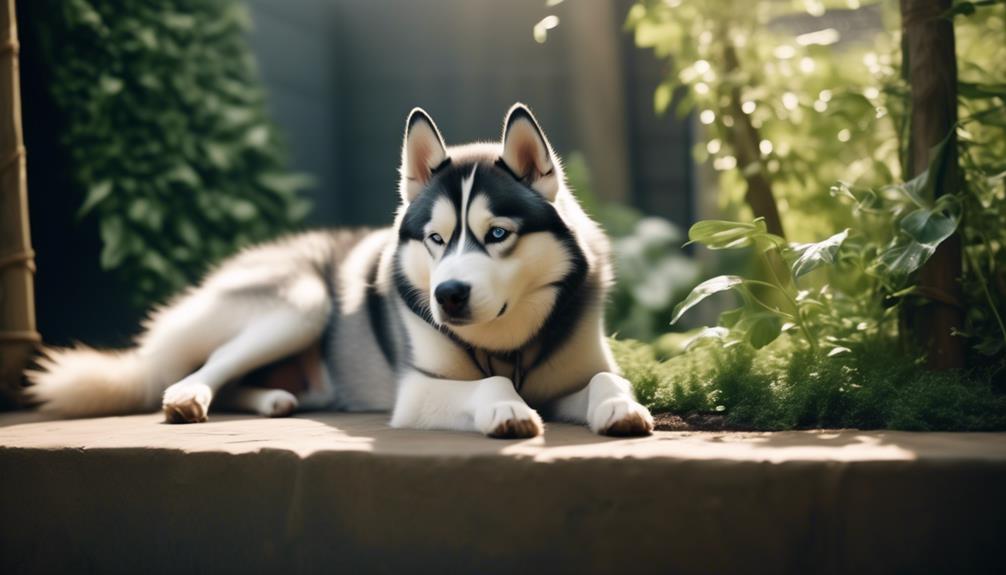
To ensure the safety and well-being of huskies in hot weather, implementing effective strategies is crucial. Here are four strategies to keep your Husky safe in hot weather:
- Provide access to fresh water at all times: Hydration is key for Huskies, especially in hot weather. Make sure your Husky has access to clean and cool water throughout the day, whether they're indoors or outdoors.
- Keep Huskies indoors with air conditioning: Huskies aren't built for hot climates, so it's important to keep them cool indoors on hot days. Air conditioning can help regulate their body temperature and prevent overheating.
- Limit outdoor activity and provide shade: Huskies have a thick guard hair coat that insulates them in cold weather but can make them prone to overheating in hot weather. Limit their time outside and provide a shaded area where they can cool down and escape direct sunlight.
- Adjust walk times to cooler periods: When the temperature rises, it's essential to adjust your Husky's walk times. Take them for walks early in the morning or late in the evening when temperatures are cooler. This will help prevent their body from getting too hot and reduce the risk of heat-related illnesses.
Considerations Before Getting a Husky in a Hot Climate
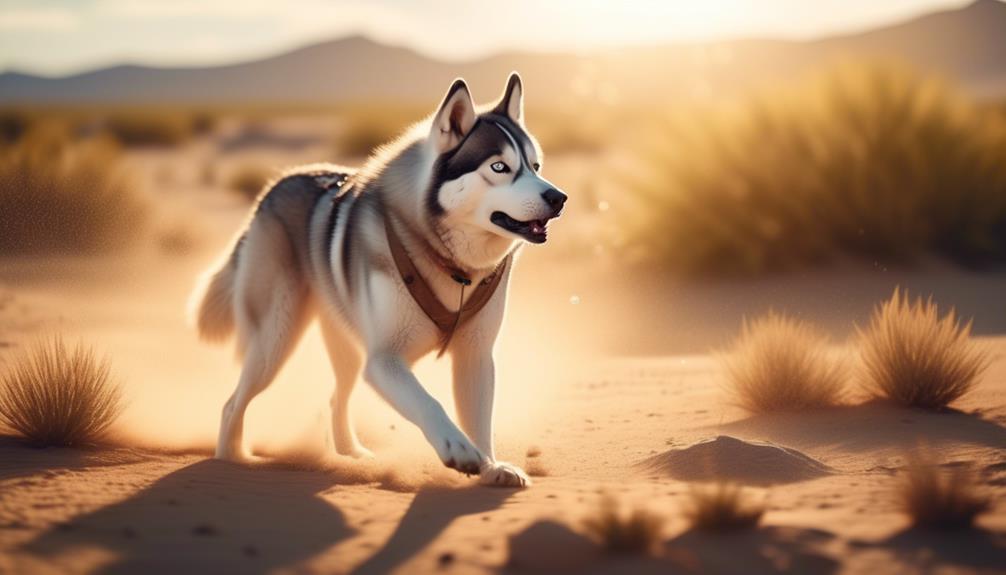
Given the challenges of keeping huskies safe in hot weather, it's essential to carefully consider certain factors before deciding to own a husky in a hot climate. While huskies can live in hot climates with proper care, it isn't a good idea to keep them in such environments. This is especially true because huskies are well-adapted to cold weather conditions, with a thick double coat that insulates them from the cold. In hot climates, their thick fur becomes a burden, making it difficult for them to regulate their body temperature. As a result, they can easily become dehydrated and overheated, leading to serious health issues.
To provide a suitable environment for a husky in a hot climate, it's crucial to provide plenty of fresh water at all times. Huskies should have access to shade and a cool area where they can rest and cool down. Limiting their outdoor activity during the hottest parts of the day is also important.
Additionally, owners should be cautious of hot pavement, as it can burn their sensitive paw pads. Responsible decision-making is key, as huskies may not realize they're too hot until it's too late.
Frequently Asked Questions
Is It Bad to Have a Husky in Hot Weather?
Having a Husky in hot weather can be detrimental to their health. They are at risk of heatstroke, so cooling techniques and proper hydration are crucial. Behavioral changes, exercise limitations, potential skin problems, and adjusting grooming routines are also important considerations.
What Temperature Can Husky Tolerate?
Huskies can tolerate temperatures between 68 and 86 degrees Fahrenheit. Signs of heat stroke include excessive panting and exhaustion. To keep them cool in hot weather, provide shade, water, and limited exercise. Proper hydration is crucial.
Do Huskies Shed More in Warm Climates?
Huskies shed more in warm climates due to their thick double coat, which is designed for colder environments. The heat can lead to increased grooming challenges, behavioral changes, exercise limitations, and potential health concerns.
Can Husky Survive in Usa?
Huskies can survive in the USA with proper adaptation and management of heat stress. Cooling options, proper hydration, and grooming are vital. Husky-friendly activities and exercise routines should consider the health risks in hot areas. Alternatives exist for hot climates.









